Utilizing shipping containers for purposes beyond shipping, such as storage, office space, or even as a building material for homes, has become increasingly popular. However, this innovative use raises important questions regarding legality and regulations, particularly concerning planning permission. Planning permission is a formal requirement in many locations, which ensures that any development or use of land is carried out in a controlled manner, adhering to local planning policies and building regulations.
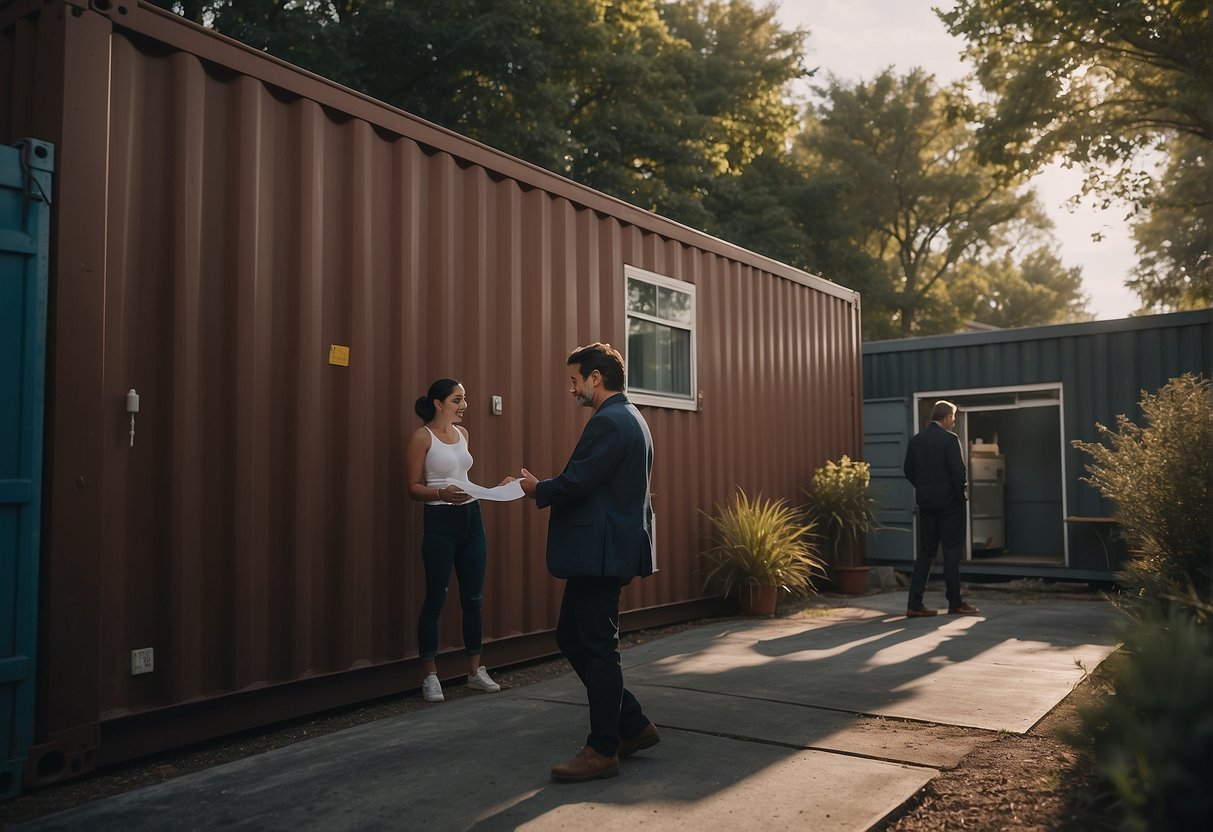
Whether or not you need planning permission to use a shipping container can vary based on several factors. In general, if the container is being used temporarily and is not permanently attached to the land, you might not need planning permission. However, if the container is modified, such as the addition of doors or windows, or if it is intended to be a permanent or long-term fixture, planning permission may be required. It is crucial to check with local authorities as regulations can differ greatly depending on the area.
Meeting the local building codes and zoning laws is a prerequisite for installing a shipping container on your property. Failure to comply with these regulations can lead to fines, penalties, and even the forced removal of the container. Before moving forward with any project involving a shipping container, a thorough investigation into the local requirements and obtaining any necessary permits is highly advisable.
Understanding Planning Permission for Shipping Containers
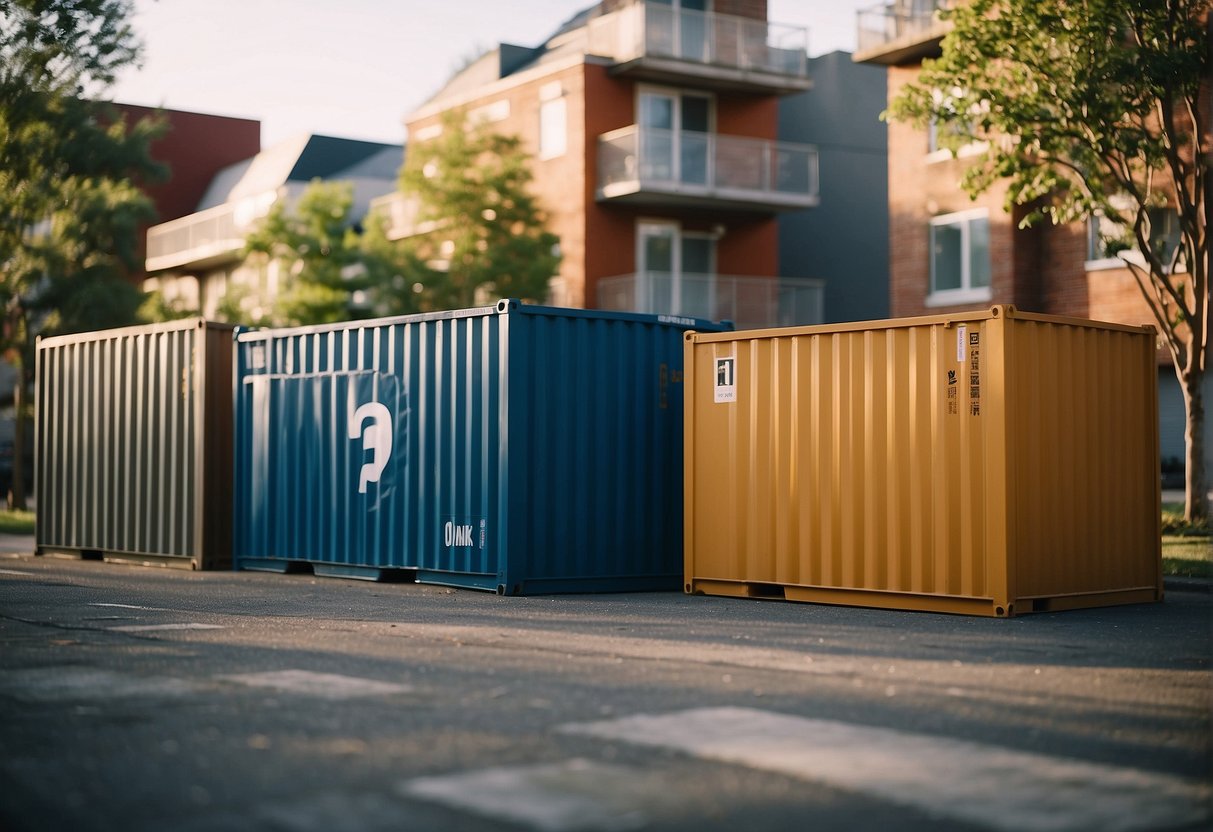
When considering the installation of a shipping container, it is essential to be informed about the legalities which revolve around planning permission. The criteria and regulations can vary greatly depending on the intended use and location.
Definition and Importance
Planning permission is a legal mechanism used to determine whether certain types of buildings or changes to existing structures are permissible. For shipping containers, planning permission is crucial as it ensures land is used in a way that is safe and in the interests of the community and the environment. The importance of obtaining permission lies in legality and compliance with local regulations.
The Role of Local Authorities
The enforcement and specification of rules governing planning permission falls under the jurisdiction of the local authority or, more specifically, the local planning authority. These bodies assess applications based on various criteria, including environmental impact, sustainability, and neighborhood amenity. Engaging with the local authority early on is advised to navigate the rules and regulations with ease.
When Permission is Typically Required
Permission may be mandated for shipping containers if they are intended for permanent use as part of a business operation, or if they are altered to create a livable space. Certain legal requirements must be met, and these are defined by factors such as the container’s dimensions, location, and duration of use. Temporary structures often have different regulations compared to permanent buildings but typically, the longer a container will be on-site, the more likely that permission will be needed.
Placement and Purpose
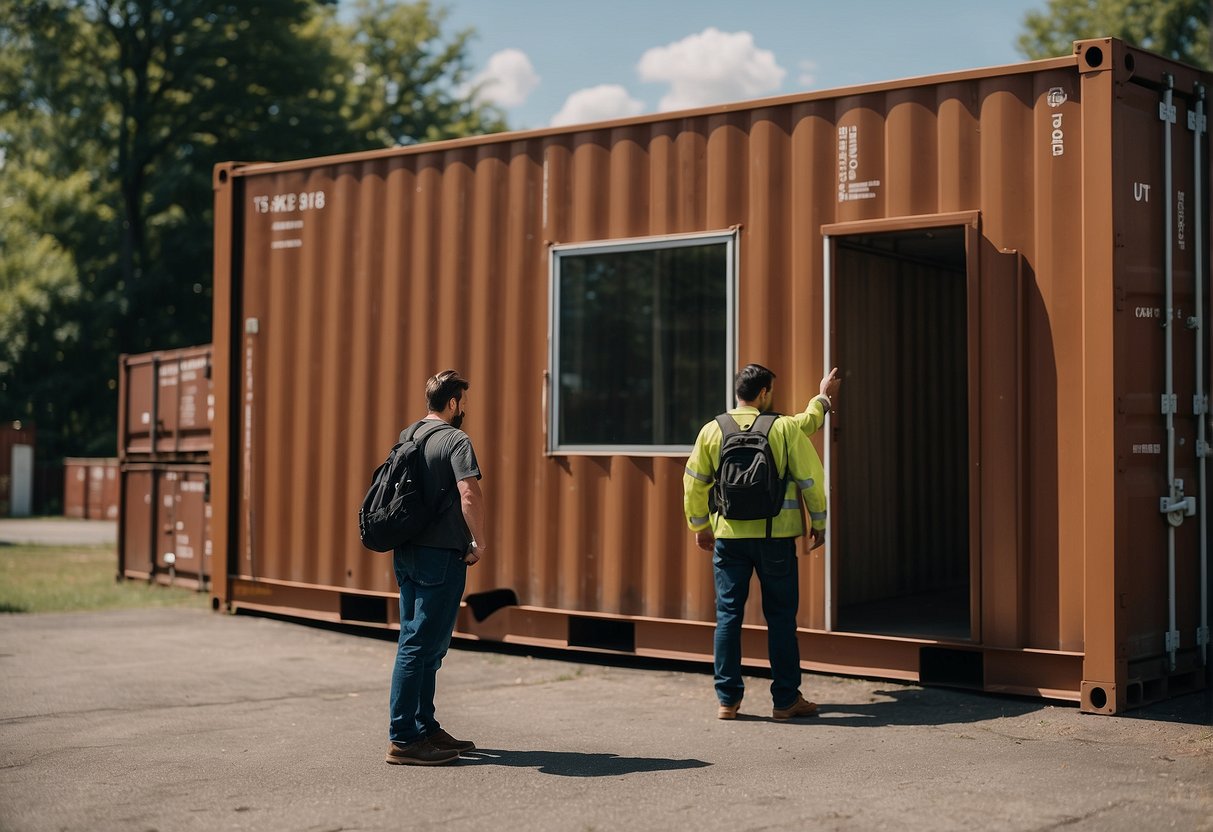
Whether placing a shipping container on your property for storage or habitational purposes, it’s critical to consider its permanency, the intended use, and the potential impact on the surrounding location and environment.
Temporary vs. Permanent Structures
Temporary structures often include storage containers used for short-term purposes and may not require planning permission if they exist on the property for a limited time frame. However, for permanent structures, such as offices or homes made from shipping containers, planning permission is typically necessary, especially when a conversion constitutes a fixed living or business space on green belt land or in a conservation area.
Storage vs. Habitation
Containers purposed for storage on private property may fall under permitted development rights, avoiding the need for planning permission, provided they don’t interfere with the property’s use or exceed certain size thresholds. Conversely, containers intended for habitation—as a house or a permanent office—usually require compliance with building regulations and planning permission, especially if placed within an Area of Outstanding Natural Beauty or a national park.
Impact on Location and Environment
The location and environment are crucial factors in planning permissions. Containers placed in a business district may have different regulatory requirements compared to those in a residential area. The potential environmental impact of a shipping container, particularly in sensitive locations like Green Belt land or conservation areas, is often assessed rigorously to ensure it aligns with local development and environmental protection standards.
Size, Appearance, and Modifications
When considering the use of a shipping container for construction, planning permission may be influenced by the container’s size, exterior appearance, and any modifications made to it. These factors can affect how a shipping container integrates with its surroundings and complies with local regulations.
Size Regulations and Restrictions
Local zoning laws often dictate the size specifications for shipping containers, especially for their use as building structures. Common dimensions for shipping containers are 10′, 20′, 40′, and 40′ high cube. However, regulations may vary, with certain areas allowing only specific sizes or limiting the number of containers that can be used. It’s important to check with local authorities to understand the size restrictions that apply to your project.
Aesthetic Considerations
Aesthetic considerations are key when integrating shipping containers into environments where their industrial look may not blend seamlessly. The painting of containers can help them fit into local aesthetics, while additional elements such as wooden cladding, fencing, or hedgerows can provide a camouflage or complement the existing surroundings. For permanent structures, more substantial aesthetic changes might be necessary, which could include the addition of windows, doors, or even sheds attached to the container.
Modifying Shipping Containers
Modifications to shipping containers, whether creating a shipping container home or other structures, can require permits, especially if the modifications alter the structural integrity of the container. Adding doors, windows, or changing the container’s frame may warrant a thorough review by local planning agencies. Where such modifications are made, using materials like wooden cladding can improve the appearance and may influence the likelihood of obtaining necessary permissions.
Specific Regulations and Exemptions
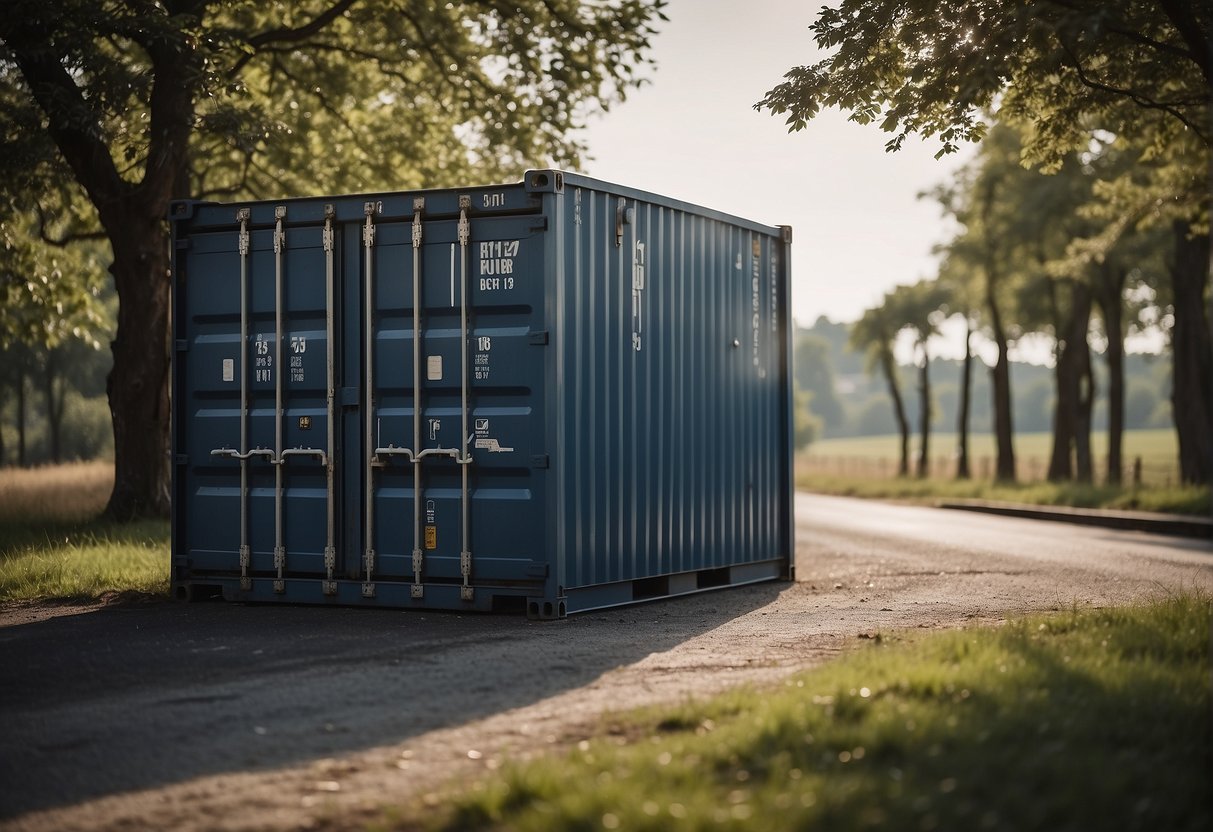
When exploring the need for planning permission for a shipping container, it’s crucial to understand that specific regulations can either mandate or exempt the requirement for planning permission, and these are influenced by the intended use and location of the container.
Checklist for Exemptions
- Size & Duration: Containers under a certain size and used temporarily (typically not exceeding 28 days) may be exempt.
- Purpose: Containers that fall under the category of temporary agricultural or forestry buildings may not require permission.
- Location: Containers placed in the rear of a property, not visible from the street, and meeting specific guidelines generally have fewer restrictions.
Listed Buildings and Special Areas
- Conservation Zones: In Areas of Outstanding Natural Beauty (AONB), World Heritage Sites, and National Parks, stricter rules often apply.
- Listed Building Consent: If the shipping container affects the setting of a listed building, planning permission and listed building consent might be necessary.
Commercial and Agricultural Use
- Farmers & Agriculturists: May not need planning permission for containers used for storage related to agricultural operations.
- Businesses & Small Industrial Units: For commercial operations, a full planning application is often required, particularly if the container is customer-facing or alters the usage of land.
- Eco-Friendly Initiatives: Shipping containers repurposed for eco-friendly uses could potentially be considered more favorably in planning decisions.
- Temporary Caravans: Similar to mobile homes, caravans can sometimes be sited without planning permission, but restrictions apply regarding the time and purpose of their use.
Practical Considerations
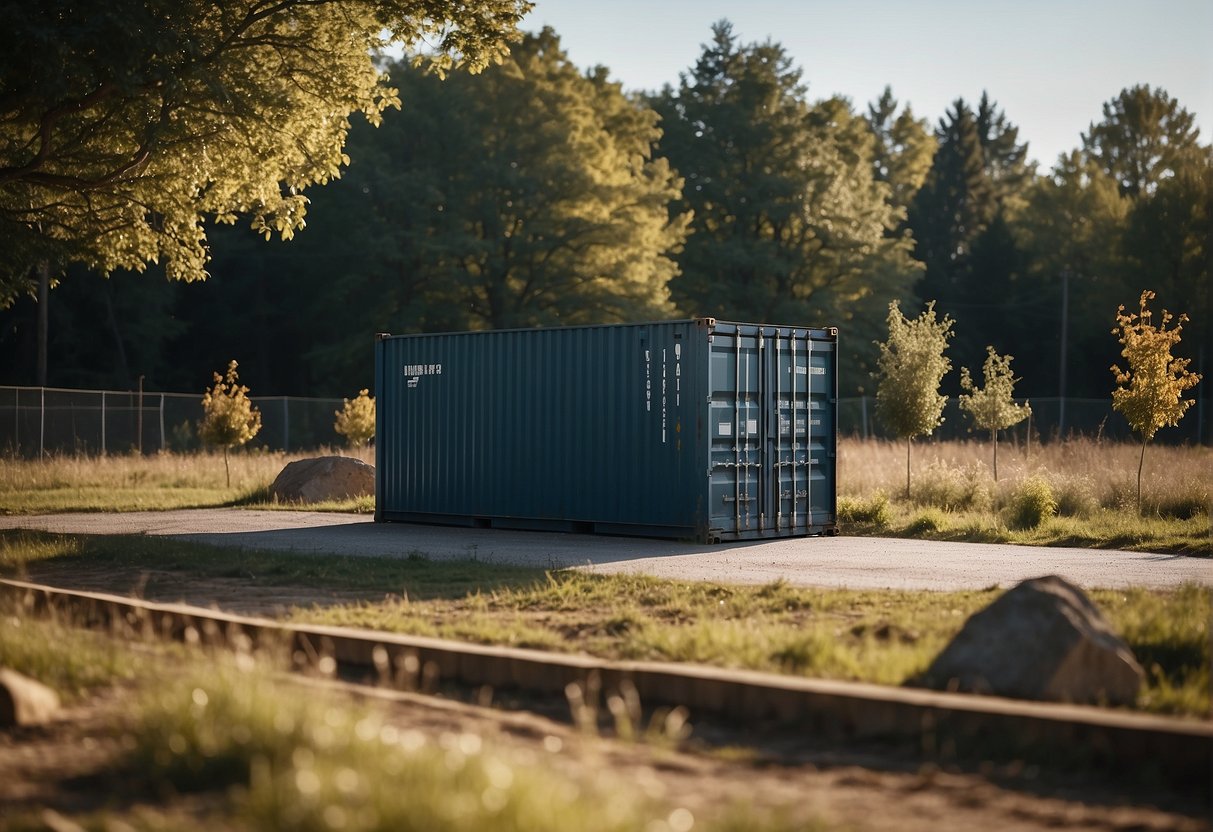
Before installing a shipping container for any purpose, it is crucial to address practical considerations that ensure the structure meets local codes and functions effectively. Thorough planning for foundational stability, access to utilities, and robust security measures are essential for a successful setup.
Foundation and Stability
The foundation holds paramount importance in the placement of shipping containers. A stable and level foundation prevents structural issues, aligns with building regulations, and supports durability. It typically comprises concrete piers, a full slab, or treated timber. Not only does an apt foundation provide stability, but it also significantly affects the container’s insulation and overall accessibility.
Utilities and Services
When converting a shipping container for habitation or operation, it is necessary to integrate electric, plumbing, and gas services. Professional installation ensures compliance with safety standards and building codes. Planning for these services includes accessing the local grid or finding alternative solutions like solar panels for electricity or propane tanks for heating.
Security and Durability
Shipping containers are renowned for their security and durability. Enhancements such as lock boxes, crossbar locks, and alarms amplify the inherent security of the steel structure. Meanwhile, durability depends on proper insulation against heat and cold, weatherproofing, and regular maintenance. These measures safeguard the container’s contents and extend its lifespan.
Navigating the Approval Process

The approval process for a shipping container involves a detailed application, specific guidelines from the local planning office, and a clear strategy for handling potential objections or appeals. This section leads you through these steps.
Preparing Your Application
The first crucial step in obtaining approval is to prepare your application thoroughly. This includes gathering necessary documentation such as site plans, designs, and a clear statement of intent. It’s imperative to check the local planning office’s website for any extra conditions specific to shipping containers. For instance, regulations might specify standards focused on minimizing visual disturbance.
Consulting with Local Planning Office
Next, individuals should consult their local planning office to understand the specific requirements for shipping container installations. It’s often beneficial to engage in a pre-application discussion to clarify any queries. During this phase, the local planning office can provide valuable insights into the likelihood of approval and any additional information that will need to accompany the application.
Handling Objections and Appeals
After submitting an application, one may face objections from neighbors or the local community based on potential visual or environmental impact. To address these concerns, applicants should respond promptly and constructively. If the application is rejected, the applicant has the right to file an appeal. Be aware that ignoring planning regulations can lead to fines or penalties, thus adhering to proper channels is critical for a successful project.
Additional Considerations for Shipping Container Use
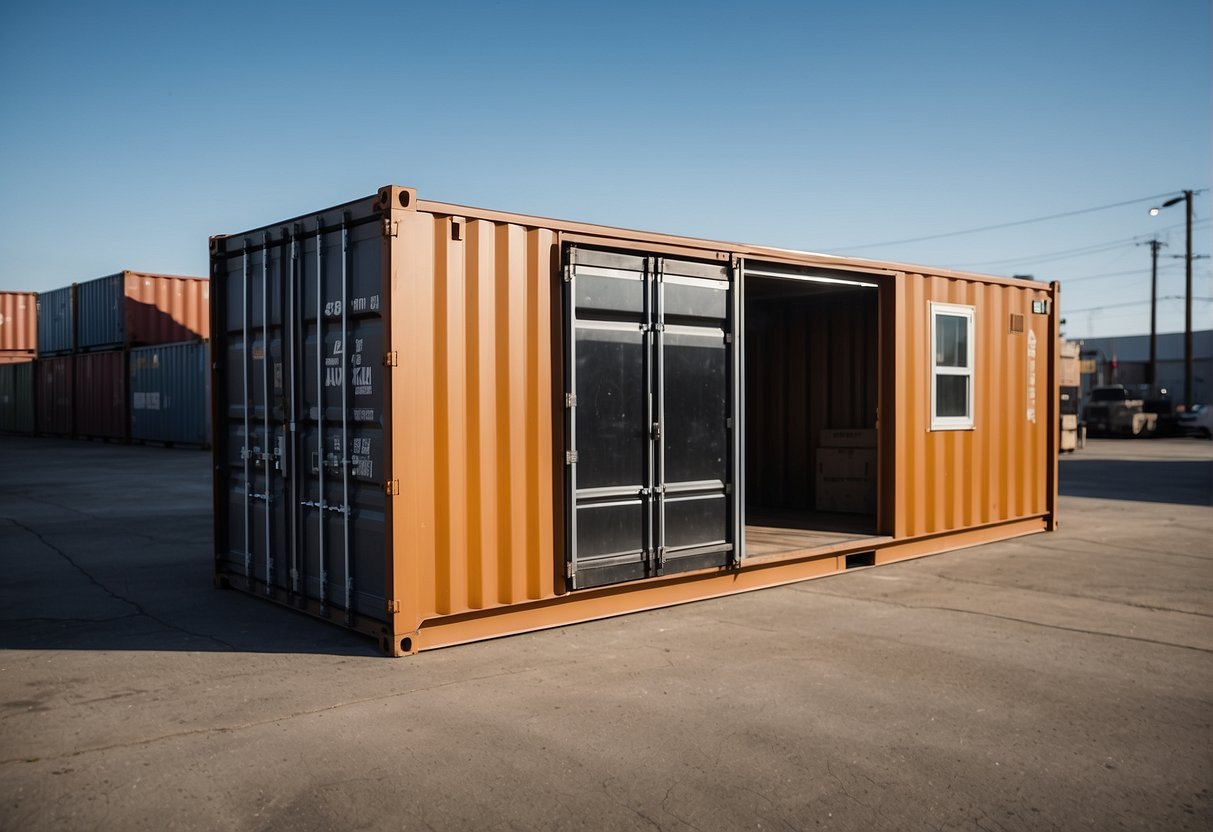
When opting for shipping container applications, whether for residential or commercial purposes, it’s crucial to account for their design and regulatory implications. Each consideration can significantly impact the project’s viability and alignment with sustainability goals.
Residential vs. Commercial Applications
For residential applications, the primary concern in utilizing shipping container homes involves adherence to local zoning regulations and building codes. These structures may require permission if they’re intended as permanent residences. For commercial usage, such as turning containers into office space, the requirements may vary. One must assess the intended usage against the local regulations to ensure compliance.
Sustainable and Eco-Friendly Practices
The use of shipping containers as eco-friendly solutions in construction has been growing in popularity. Applications such as container conversion into living or working spaces can minimize the environmental impact by reusing materials. However, integrating sustainable practices involves careful planning to ensure that the modifications do not detract from the container’s energy efficiency.
Container Conversion and Customization
Container conversion demands careful consideration concerning structural integrity when customizing a shipping container home or office. When carving out windows or doors, the strength of the container can be compromised if not properly reinforced. Furthermore, container structures in a yard full of containers being used for storage or as temporary structures like mobile homes must be configured in a way that adheres to safety standards and local building codes.
Legal and Community Aspects
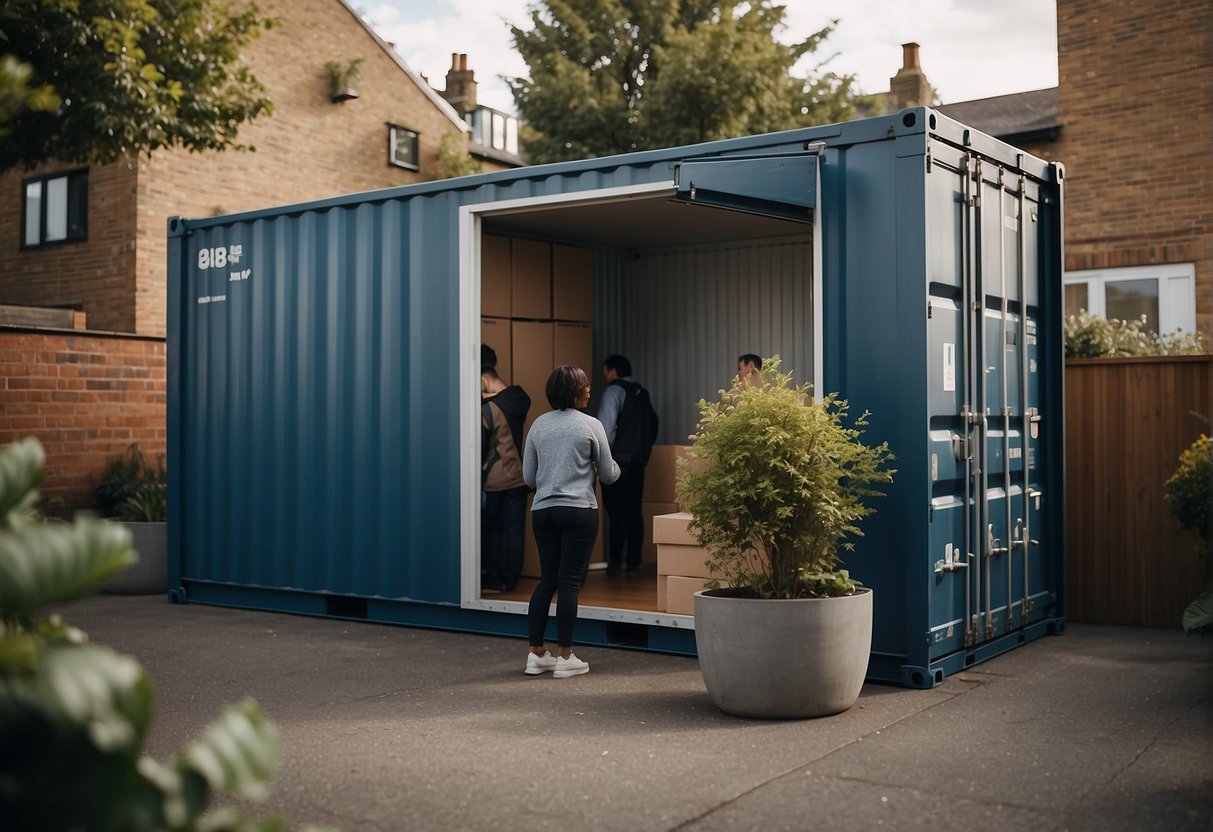
When considering a shipping container for any purpose, one must navigate the complexities of legal stipulations and community considerations to ensure compliance and maintain harmony.
Local and National Legal Framework
Local regulations and legal requirements vary significantly across regions, which dictate whether a shipping container can be used on a property. For instance, permits may not be necessary if a container is used temporarily, as noted in an overview by Mobile Modular Containers. Yet, if intended for permanent use, the owner must satisfy a comprehensive set of standards, including building codes. Costs for permits also differ, with general estimates ranging from $500 to $2,000 for building permits, as highlighted by Tuff Shipping Containers.
Deed Restrictions and HOA Rules
Deed restrictions and HOA (Homeowners Association) rules may pose additional limitations on the placement and usage of shipping containers. Deed restrictions are binding agreements that dictate the use of land and set forth conditions for modifications. Similarly, HOA rules may specifically address the use of non-traditional structures like shipping containers in their communities. Non-compliance may lead to penalties or obligatory removal of unauthorized structures.
Maintaining Good Neighbor Relations
Integrating a shipping container into a residential setting also involves a degree of community engagement. To maintain good neighbor relations, it’s beneficial to communicate intentions clearly and be open to address any concerns. After all, what might be seen as an innovative project to one resident might appear unsightly or disruptive to another. Empathy and cooperation can be crucial in balancing personal property rights with the collective interests of the community.
Financial Considerations

When contemplating the use of a shipping container, whether for personal or business purposes, it’s crucial to account for the associated financial implications. These considerations include initial outlays, the risk of incurring fines, and the benefits containers may offer businesses, especially in the self-storage sector.
Estimating Costs and Budgeting
The direct costs of acquiring a shipping container can vary widely depending on factors like size, condition, and delivery expenses. Lot size also plays a role in determining setup costs, including the foundation and utility connections, if applicable. Prospective owners should prepare a detailed budget that accounts for:
- Purchase price or lease costs for the container
- Delivery fees
- Site preparation expenses
- Utility connections (if necessary)
- Local authority fees for planning permission
Budgeting should reflect a comprehensive view of these costs to ensure financial readiness for the undertaking.
Potential for Fines and Penalties
Unapproved installations of shipping containers can lead to substantial fines and penalties from local authorities. Regulations vary, but common issues that could trigger fines include:
- Improper land use or zoning violations
- Failure to comply with building codes and permits
- Causing obstruction or nuisance to neighbors
Businesses and individuals must research and adhere to local planning permissions to avoid such financial setbacks.
Advantages for Businesses and Storage
Shipping containers present significant advantages for businesses, particularly in the trade and self-storage sectors. Their modularity, durability, and security make them an attractive option for storing gear and inventory. Businesses can benefit financially from containers due to:
- Reduced construction and setup costs compared to traditional buildings
- Potential to increase storage capacity with minimal land use
- Enhanced security features inherent in container design
- Possibility for asset liquidation through the sale of the container later on
For businesses evaluating cost-effective expansion or storage solutions, shipping containers often emerge as a financially viable choice.
